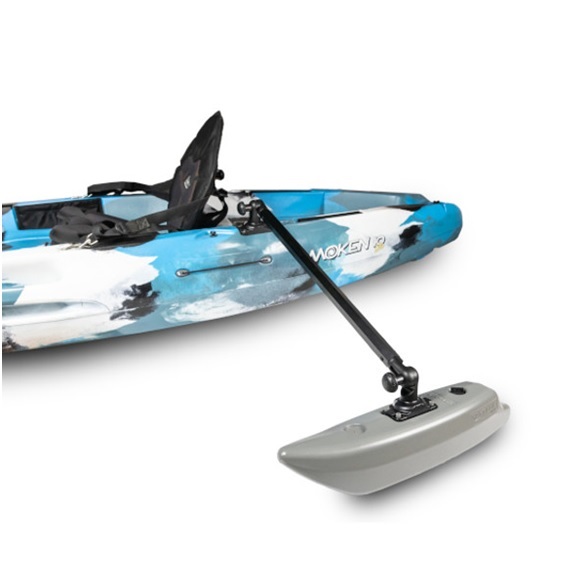Posted by Forrest on Nov 29th 2024
Outfitting Your Kayak for Winter: Covering the Essential Bases
There are lots of reasons to hit the water in the winter when the rest of the sportsmen are either in the field hunting or at home keeping warm.
For one, the crowds on the water usually dwindle to a trickle in the winter. You just won’t be fighting for space on the water like you would be in the summer.
Another is the weather. Granted, there is sometimes heinous weather on the water in the winter (depending on where you are in the country) but most bad weather is frontal. That is, weather doesn’t typically turn on a dime like it can in the summer. Bad weather occurs in the winter but usually you have warning - unlike with the isolated and scattered thunderstorms that can pop up in the summer in a matter of hours.
More importantly, some areas of the country see the highest proportion of their clear, bluebird days in the winter. It might be cold, but some winter weather is the best of the whole year - with clear skies, low wind and bright sun.
Of course, fishing can also be surprisingly good in the winter. Even many warm-water species like pickerel, bass and panfish can be caught in droves when the temperatures drop. You will need to adjust your technique and slow things down, but you can still catch.
And, of course, there are some species for which fishing in the winter is actually arguably better, like walleye, perch, pike and trout.
So, there are plenty of reasons not to drydock your fishing yak through the winter.
At the same time, you need to be prepared for the elevated risks of cold temperature kayaking.
Do so by outfitting your fishing rig with these essentials.
Warm, Waterproof Clothing
First, and most importantly, make sure you dress appropriately for the sport. This means dressing warmly for winter weather with a few special caveats.
Start with a warm baselayer that will wick moisture away from your skin. Both wool and performance synthetics are good here.
Next you need a warm midlayer, which will provide the bulk of your insulation. Wool is great here as well because it stays warm when wet. Avoid cotton entirely when on the water.
Lastly you need a shell that is both windproof and waterproof - the latter is important. It won’t save you if you fall in, but a waterproof shell will keep you warmer when on the water and protect you against splashes.
Also, make sure to wear warm, waterproof gloves, shoes, and pants, too.
A PFD

A PFD, or personal flotation device, is not a thing that is nice to have on the water in the winter. It is something you must have, and in some states, as a matter of compliance with local laws.
In fact, some states like New Jersey and Pennsylvania require you not only to have a PFD when on the water in the winter, but to be wearing it while out there.
The reason is to protect you against cold shock. If you do unfortunately fall in, the cold can stun and disorient you, making it dramatically harder to coordinate yourself and keep your head above water, which elevates the risk of drowning.
Better safe than sorry - have and wear a life jacket in the winter, even if not required by law.
Adequate Lighting
Having adequate lighting on your fishing kayak is another matter that might be regulated by law, but either way, you should have a good signaling beacon in case you get stuck out there later than you’d like.
In the winter, the sun sets early and quickly. Being on the water after dark is dangerous enough, and it’s worse in the winter. Just in case you get stuck out there, having a light that will help you flag down other boating traffic could save your life.
Outriggers for Your Kayak

The rationale behind outriggers for your kayak here is that they can help prevent you from tipping. Admittedly, most fishing kayaks are extremely stable and difficult to tip - but with a good outrigger for your kayak, it can be nearly impossible to tip it.
And that is a good thing. It is inconvenient and unpleasant to take a spill from your fishing yak in the summer. It can be lethal in the winter.
Auditory and Visual Signal Devices
You will also want to carry numerous signaling devices to help you get attention, should you need it.
We already covered a flashlight, which can be used as both a beacon and a distress signal. A brightly-colored flag can be a good thing, too.
Whistles and air horns are better, as they enable you to get attention even if it’s difficult to locate you visually. A whistle can save you if you ever fall in the water.
Gear Up with Fishing Kayak Accessories Here
All in all, as long as you prepare for a day on the water, there are plenty of recreational opportunities to be had (and safely) for winter kayakers. Just be prepared, always let someone know where you’re going, and take no chances. We can help you prepare with some of the essential fishing kayak accessories.
Otherwise, be safe on the water and enjoy the quieter, colder months of the year when you will mostly have the water to yourself.

